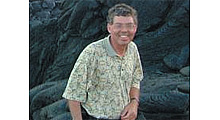
Doug Lung
The Incentive Auction Task Force presented an update at Thursday's FCC Open Meeting. One of the new items discussed was release of a new, improved version of the OET-69-based TVStudy software. This version was driven by comments received since the software’s initial release. This should be released soon. The FCC will also be releasing “data files and details of an approach to determine permissible channel assignments in the repacking process, as well as additional data to facilitate independent analysis and public input.”
Another item of importance to TV broadcasters is reimbursement for repacking costs. The FCC has contract with consulting firm Widelity for a preliminary review of the range of unit costs for equipment replacing, sourcing and timing of replacement equipment availability, and logistical challenges of limited tower crews. While Widelity has a wide range of experience with wireless and IT infrastructure, a glance at the About Widelity Web page shows no experience with high-power, tall tower broadcast technology. None of the principals or team members has any broadcast experience listed, although collectively they do have a wide range of experience in fiber, microwave and other broadband networks, as well as satellite operations and project management.
It’s encouraging to see that two of the team members--Christopher Cather and John Davidson-- are certified tower climbers, but I fear Widelity will face the same steep learning curve Nextel faced when it started the 2 GHz BAS transition. Broadcast operations are quite different than fiber, wireless broadband and even microwave data links and that transition turned out to be far more difficult and lengthy than expected. In addition to the two tower climbers, Widelity may also want to consider adding some engineers and project managers with broadcast TV experience before tackling the FCC project.
Look for more pressure for stations to entering channel sharing agreements. Few details were provided, but the presentation listed “Develop STAs and waivers of Commission's rules to facilitate pilot projects” and “encourage channel sharing pilot projects” as two ways to generate more interest in channel sharing.
I wonder if those STAs and waivers could include use of new video encoding technology or even use of new transmission technology?
It was clear from the presentation that there are several difficult decisions yet to be made – there is little agreement on a 600 MHz band plan, and a vigorous debate over allocation of licensed versus unlicensed spectrum.
Negotiations with Canada and Mexico are crucial to a successful repacking and progress has been slow there. Acting Commissioner Clyburn will be meeting with officials in Canada next month and plans a side meeting with regulators from Mexico at next week's ITU Global Symposium for Regulators. That symposium has the theme “4th generation regulation for a 4G world.”
Commissioner Jessica Rosenworcel, in her remarks after the Incentive Auction Task Force presentation, said, “…forward progress means we should assess what aspects of the auctions are not really in dispute.” She asked the Task Force to “consider if we should collect these issues, tee up an Order, and take them off the table.”
It seems clear the Commissioners intends to have the auction ready to go in 2014 and a Report and Order out before the end of this year. If these deadlines are going to be met, it should be a busy summer.
The professional video industry's #1 source for news, trends and product and tech information. Sign up below.

Doug Lung is one of America's foremost authorities on broadcast RF technology. As vice president of Broadcast Technology for NBCUniversal Local, H. Douglas Lung leads NBC and Telemundo-owned stations’ RF and transmission affairs, including microwave, radars, satellite uplinks, and FCC technical filings. Beginning his career in 1976 at KSCI in Los Angeles, Lung has nearly 50 years of experience in broadcast television engineering. Beginning in 1985, he led the engineering department for what was to become the Telemundo network and station group, assisting in the design, construction and installation of the company’s broadcast and cable facilities. Other projects include work on the launch of Hawaii’s first UHF TV station, the rollout and testing of the ATSC mobile-handheld standard, and software development related to the incentive auction TV spectrum repack. A longtime columnist for TV Technology, Doug is also a regular contributor to IEEE Broadcast Technology. He is the recipient of the 2023 NAB Television Engineering Award. He also received a Tech Leadership Award from TV Tech publisher Future plc in 2021 and is a member of the IEEE Broadcast Technology Society and the Society of Broadcast Engineers.
